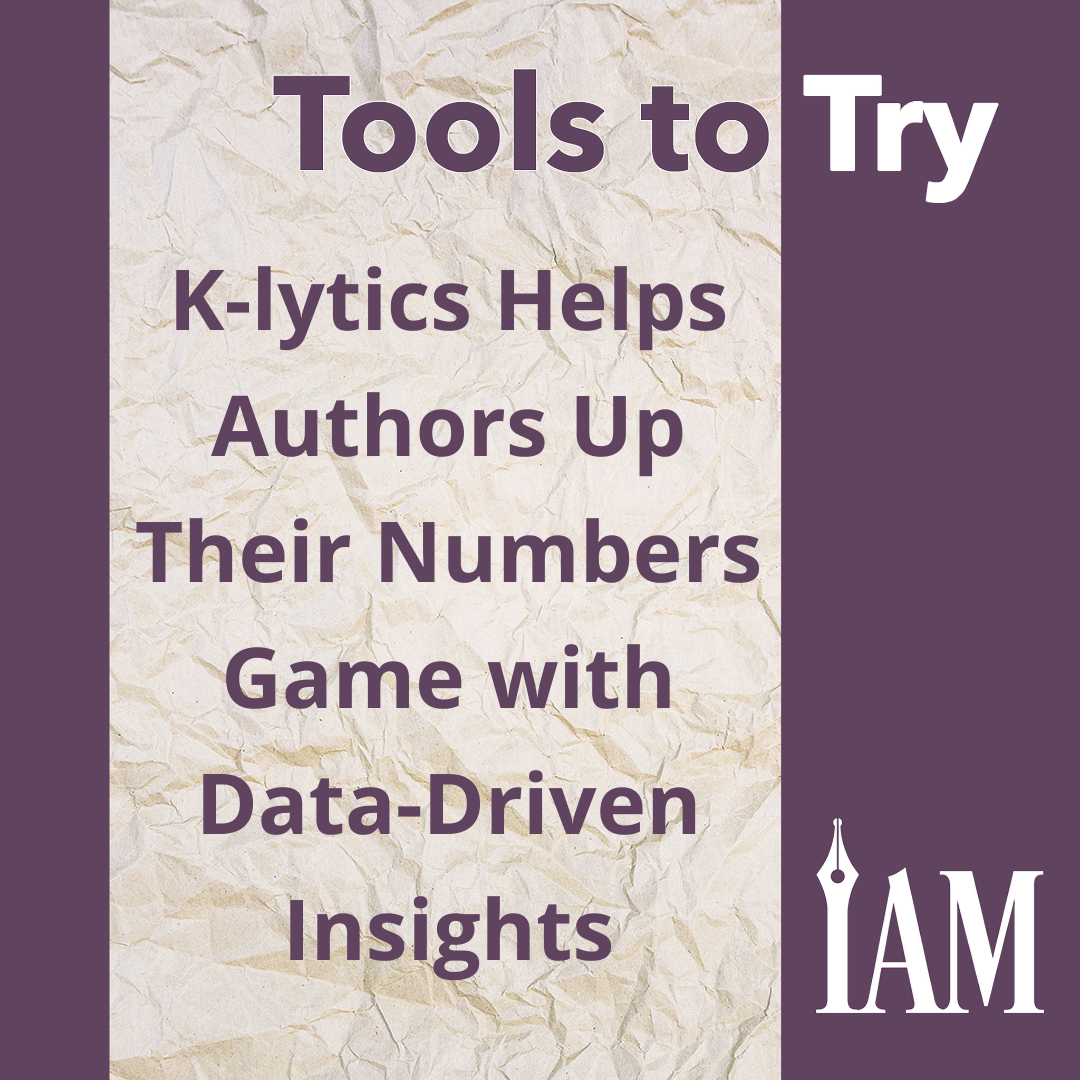K-lytics Helps Authors Understand the Industry with Data-Driven Insights
The average indie author has probably heard about K-lytics founder Alex Newton’s monthly Amazon Kindle data deep dive. In each report, he curates aggregate data, both historical and current, and provides analytical insights into the state of things on Amazon’s Kindle store.
For those with an eye for numbers, K-lytics reporting can offer a look at what readers want in your genre, as well as larger trends in the publishing industry. Give it time, and that understanding could lead to a potential boost for your books on the online storefront. Below, we’ll cover key features of K-lytics reporting and what data it can provide to better assist you in making decisions for your author business.
Reporting
For those who find numbers daunting, K-lytics aims to demystify Amazon’s massive amount of open-source data, compile it, and analyze it so it can be of practical use. K-lytics’s primary offerings are reports: genre reports and monthly market analysis reports, both of which are broken down into observations, top selling covers by genre, blurb analysis, and more. These reports fall under three tiers: basic reports, monthly genre reports, and premium genre reports (niche focus).
Each monthly report includes metrics such as sales volume, rank momentum, competition, effort to enter the market, and category power. K-lytics analyzes more than thirty main book genres, four hundred sub-markets and two thousand four hundred sub-sub-markets and offers a statistical analysis of how well particular categories are performing by the metric. Using K-lytics’s reports, you can get valuable data, such as the average sales rank of the top twenty titles, estimated sales per day of the top twenty titles, and the average sales rank of No. 1 bestsellers.
Digging into the individual reports, genre reports are typically updated every year and include major genres such as Thriller, Sci-Fi, Fantasy, and Romance. Occasionally, a niche-specific report within the genre report will come available. These are considered deep dives into the intricacies of the genre and include more information, such as category heat maps, pricing analysis, and other vital market intelligence.
For example, Romance has a place in the monthly report. However, genres such as Mafia Romance and Fantasy Romance have emerged as popular genres; thus, K-lytics has provided updated reporting on those specific niches and subcategories. A list of K-lytics deep-dive genre reports can be found here: https://k-lytics.com/shop.
Presentation
K-lytics reporting comes as a PDF document, and inside is a link to a video analysis with Newton himself guiding you through the report. A basic report includes overall sales volume information and a bar chart outlining the sales volume of the top one hundred titles from a visual perspective. Each category is numbered based on the performance index, so you can see which of the main genre categories are performing the best. For example, the report from December 2023 shows Romance is the clear category winner with an average sales rank of ninety-two for the top one hundred titles and an estimated 644 sales per day of the top selling title. There are other charts including line graphs that depict sales rank over time of the top one hundred titles, heat map charts that identify niches within genres organized by bestsellers, and word cloud charts of the most popular words found in bestseller blurbs. Each chart in the report has a specific focus meant to drive business decisions.
Pro Tip: Each report comes with a heat map showing the genres and subgenres doing well in what are considered “hot” genres. Use the heat map to quickly identify where your current books stand among similar genres.
Pricing
K-lytics offers two different pricing structures, one-offs and a subscription. The one-off purchases can be made at https://k-lytics.com/shop and include previous genre-specific reports. The cost of individual reports runs between $37 and $47 each, and each will provide you with a detailed report and video walk-through of the report itself. Each report is yours to keep forever.
To get access to the monthly reports and all other historical reports, you’ll need to purchase one of three membership levels: Premium, Elite or Elite (Annual Pass), each of which has access to the same type of statistical analysis but with a substantial increase in data points analyzed. K-Lytics charges $37 per month for its lowest tier, Premium; $97 a month for Elite; or $497 for an entire year of reporting. In addition, the Elite and Elite (Annual Pass) options include data on more than 7,750 genre categories. Premium tier members have access to reports on 450 genre categories.
Pro Tip: Both Elite and Elite (Annual Pass) also boast access to VIP support from the K-lytics team to answer your questions.
Some authors may not need access to reporting on a monthly basis. If you find you don’t need to receive updated reports each month, K-lytics allows members to pause their subscriptions as needed, then resume monthly payments when they’re ready.
Strength in the Numbers
Where K-lytics thrives is in its nonpartisan look at both current and historical data on Amazon, identifying trends and making predictions toward the future of the Amazon platform. This data is invaluable to the savvy indie author or publisher who wants to know which categories the best-selling books in the genre are picking, words commonly found across the blurbs, or the length or price of a particular book. The tool’s comprehensive reports aggregate data into an easily digestible format that can be used to make swift decisions while cutting out the need for authors to do extensive research on their own.
Pro Tip: K-lytics reports often have a list of the top one hundred books in a given category or genre depending on the book. Each listed book has a direct link to the Amazon page, where you can view the book itself.
Where K-lytics falls behind is in its narrow focus on Amazon KDP. The reports do not have a similar counterpart to those who are “wide” or “direct,” or for those selling audiobooks. Authors who do not publish through KDP, or authors who want to understand sales trends on other platforms, will need to find other tools and services with equivalent information that applies to their business model.
Who Would Benefit Most?
From the average author planning their second series to those looking to break into a new genre, K-lytics is an excellent tool to get a snapshot of the market before you invest valuable time and creative energy into it. If you are using Amazon as a distributor and market for your books in any regard, you are the type of author most likely to benefit from the knowledge available from K-lytics.
If writing to market is part of your business model, K-lytics reports show what the average market has decided is current by heat-indexing popular categories and subcategories, or by providing word clouds of the top blurbs that are moving a lot of books daily.
Finally, if you simply want to know how a market is doing overall on a monthly historical basis, K-lytics can provide you with aggregate data and a view of the industry as a whole, so you can be a well-informed business owner.


